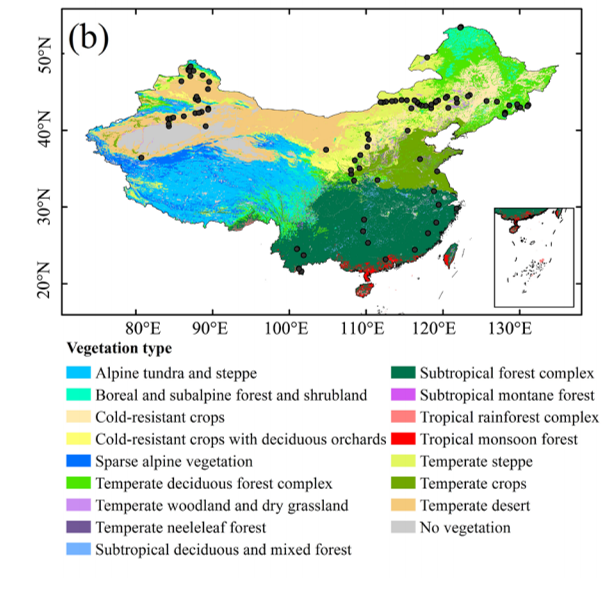The China Plant Trait Database

Description:
Plant functional traits provide information about adaptations to climate and environmental conditions, and can be used to explore the existence of alternative plant strategies within ecosystems. Trait data are also increasingly being used to provide parameter estimates for vegetation models. Here we present a new database of plant functional traits from China. Most global climate and vegetation types can be found in China, and thus the database is relevant for global modelling. The China Plant Trait Database contains information on morphometric, physical, chemical and photosynthetic traits from 122 sites spanning the range from boreal to tropical, and from deserts and steppes through woodlands and forests, including montane vegetation. Data collection at each site was based either on sampling the dominant species or on a stratified sampling of each ecosystem layer. The database contains information on 1215 unique species, though many species have been sampled at multiple sites. The original field identifications have been taxonomically standardized to the Flora of China. Similarly, derived photosynthetic traits, such as electron-transport and carboxylation capacities, were calculated using a standardized method. To facilitate trait-environment analyses, the database also contains detailed climate and vegetation information for each site.
Link to dataset:
- Wang, Han; Harrison, Sandy P; Prentice, Iain Colin; Yang, Yanzheng; Bai, Fan; Furstenau Togashi, Henrique; Wang, Meng; Zhou, Shuangxi; Ni, Jian (2017): The China Plant Trait Database. PANGAEA, https://doi.org/10.1594/PANGAEA.871819
References:
- Wang, H., Harrison, S.P., Prentice, I.C., Yang, Y., Bai, F., Togashi, H.F., Wang, M., Zhou, S. and Ni, J., 2018. The China Plant Trait Database: toward a comprehensive regional compilation of functional traits for land plants. Ecology, 99, 2.
- Wang, H., Prentice, I.C. and Ni, J., 2013. Data-based modelling and environmental sensitivity of vegetation in China. Biogeosciences, 10, 9, 5817-5830.

